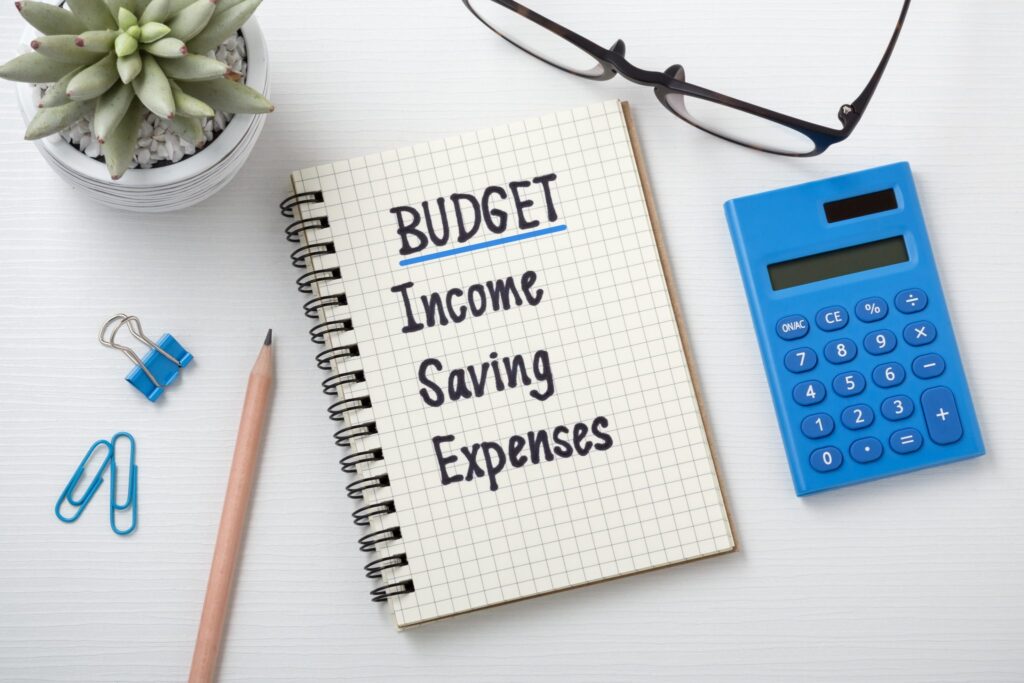Retirement planning is an essential part of securing a fulfilling future. With the average life expectancy increasing, it is crucial to have a well-designed retirement plan that meets your individual needs and aspirations. By customizing your retirement plan, you can ensure that your golden years are spent in the way you envision. In this article, we will explore the basics of retirement planning, setting retirement goals, building a customized retirement plan, managing your plan, and transitioning into retirement.
Understanding the Basics of Retirement Planning
Retirement planning involves more than just setting aside money for the future. It requires a comprehensive understanding of various aspects that impact your planning for retirement. A personalized retirement plan takes into account your unique circumstances, including your age, income, lifestyle, and financial goals.
When it comes to retirement planning, it’s important to have a clear understanding of your financial situation. This includes assessing your current income and expenses, as well as any outstanding debts or financial obligations. By having a complete picture of your finances, you can make informed decisions about how much you need to save for retirement and how to allocate your resources.
One key aspect of retirement planning is determining your retirement income needs. This involves estimating how much money you will need to cover your living expenses during retirement. Factors such as inflation, healthcare costs, and lifestyle choices can all impact your retirement income needs. By carefully considering these factors, you can create a realistic budget that will help you maintain your desired standard of living in retirement. Learn more about mastering the blueprint for financial independence.

The Importance of Personalized Retirement Plans
Personalization is key when it comes to retirement planning. Everyone has different dreams and aspirations for their retirement years. By customizing your retirement plan, you can ensure that it aligns with your individual needs and desires. This will provide you with a sense of security and peace of mind as you journey towards retirement.
When creating a personalized retirement plan, it’s important to consider your unique circumstances. This includes factors such as your current age, expected retirement age, and desired retirement lifestyle. For example, if you plan to retire early and travel extensively, you may need to save more money than someone who plans to retire later and live a more frugal lifestyle.
Another important aspect of personalized retirement planning is considering your risk tolerance. Some individuals are comfortable taking on more investment risk in order to potentially earn higher returns, while others prefer a more conservative approach. By understanding your risk tolerance, you can create an investment strategy that aligns with your comfort level and long-term financial goals.
Key Elements of a Retirement Plan
A well-designed retirement plan comprises several key elements. These include determining your retirement income needs, estimating your retirement expenses, assessing your Social Security benefits, considering any pension plans, and evaluating your investment options. Incorporating these elements into your plan will help you build a solid foundation for your retirement.
When estimating your retirement expenses, it’s important to consider both essential and discretionary expenses. Essential expenses include things like housing, healthcare, and food, while discretionary expenses include travel, entertainment, and hobbies. By carefully considering these expenses, you can create a realistic budget that reflects your desired retirement lifestyle.
Assessing your Social Security benefits is another important aspect of retirement planning. Social Security can provide a significant portion of your retirement income, so it’s important to understand how much you can expect to receive. Factors such as your earnings history and the age at which you begin receiving benefits can impact the amount you receive each month.
Additionally, if you have a pension plan through your employer, it’s important to consider how this will factor into your retirement income. Pension plans can provide a steady stream of income during retirement, but it’s important to understand the terms and conditions of your specific plan.
Finally, evaluating your investment options is crucial for building a solid retirement plan. This includes considering different types of retirement accounts, such as 401(k)s or IRAs, as well as determining an appropriate asset allocation strategy. By diversifying your investments and regularly reviewing your portfolio, you can help ensure that your retirement savings continue to grow over time.
Setting Your Retirement Goals
Once you understand the basics of retirement planning, the next step is to set your retirement goals. The first aspect to consider is your retirement lifestyle. How do you envision your ideal retirement? Do you plan to travel extensively or spend time pursuing hobbies? Identifying your retirement lifestyle will help shape your financial goals.
When thinking about your retirement lifestyle, it’s important to delve into the details. Imagine waking up in the morning and sipping a cup of coffee on your private balcony overlooking the turquoise waters of the Caribbean. Picture yourself strolling through the bustling streets of a vibrant city, exploring new cultures and cuisines. Envision spending your days in a cozy cabin nestled in the mountains, surrounded by nature’s tranquility. By visualizing these scenarios, you can gain a clearer understanding of what you truly desire from your retirement.
Retirement is an opportunity to fulfill your lifelong aspirations. Take some time to reflect on what you truly want from your retirement. Do you dream of living in a beachfront property, feeling the warm sand between your toes as you watch the sunset? Or do you envision embracing a simpler lifestyle in the countryside, tending to a garden and enjoying the peace and quiet? Whatever your vision may be, it is essential to consider it when setting your retirement goals.
Calculating Your Retirement Income Needs
Once you have determined your retirement lifestyle, it’s time to calculate your retirement income needs. Consider your expected expenses during retirement, including housing, healthcare, leisure activities, and daily living costs. Understanding your income needs will help you determine how much you need to save and the investment strategies required to meet your goals.
Imagine waking up in your dream retirement home, a beautiful villa nestled on a hillside overlooking a picturesque valley. As you step onto your terrace, you can feel the gentle breeze and hear the birds chirping in the distance. You know that maintaining this idyllic lifestyle requires careful financial planning.

When calculating your retirement income needs, it’s important to take into account various factors. Consider the cost of housing, whether you plan to own a property outright or rent. Factor in the expenses associated with healthcare, including insurance premiums and potential medical treatments. Think about the leisure activities you wish to pursue, such as golfing, sailing, or attending cultural events. And don’t forget about daily living costs, such as groceries, transportation, and utilities.
By carefully analyzing these aspects, you can create a comprehensive picture of your retirement income needs. This understanding will guide you in determining how much you need to save and the investment strategies required to achieve your goals. Whether it’s building a diversified investment portfolio or exploring opportunities for passive income, having a clear understanding of your retirement income needs is crucial for a successful retirement plan.
Building Your Customized Retirement Plan
With your retirement goals in mind, it’s time to build your customized retirement plan. This involves selecting the right retirement savings tools and incorporating healthcare options tailored to your needs.
Planning for retirement is an exciting and important step in securing your financial future. It’s a time when you can focus on your passions, spend quality time with loved ones, and enjoy the fruits of your labor. However, to make the most of your retirement years, it’s essential to have a well-thought-out plan in place.
When it comes to choosing the right retirement savings tools, there are several options available to you. One popular choice is an individual retirement account (IRA), which allows you to contribute a certain amount of money each year and enjoy tax advantages. Another option is a 401(k) plan, typically offered by employers, which allows you to contribute a portion of your salary towards retirement. Annuities are also worth considering, as they provide a guaranteed income stream for life.
Each retirement savings tool has its unique advantages and considerations. For example, IRAs offer flexibility in investment options, while 401(k) plans may come with employer matching contributions. Annuities, on the other hand, provide a sense of security with their guaranteed income. By understanding the different choices and their suitability for your situation, you can make informed decisions that align with your retirement goals.
In addition to selecting the right retirement savings tools, it’s crucial to incorporate healthcare into your retirement plan. Healthcare costs can be a significant expense during retirement, and failing to account for them can derail your financial stability. It’s important to research different health insurance options, including Medicare, and understand how they can assist you in managing your healthcare expenses.
Medicare is a federal health insurance program that provides coverage for individuals aged 65 and older. It offers various plans, including Part A (hospital insurance), Part B (medical insurance), Part C (Medicare Advantage), and Part D (prescription drug coverage). Understanding the different parts of Medicare and how they work together can help you make informed decisions about your healthcare coverage.

Aside from Medicare, there are other healthcare options to consider, such as long-term care insurance and supplemental health insurance. Long-term care insurance helps cover the costs of assisted living, nursing home care, and in-home care, which can be significant expenses during retirement. Supplemental health insurance, on the other hand, provides additional coverage for services not covered by Medicare.
By incorporating healthcare into your retirement plan, you can safeguard your well-being and financial stability during retirement. It’s essential to consider your current health status, family medical history, and potential healthcare needs when making these decisions.
Building your customized retirement plan is a process that requires careful consideration and research. By selecting the right retirement savings tools and incorporating healthcare options tailored to your needs, you can set yourself up for a fulfilling and worry-free retirement.
Managing Your Retirement Plan
Once you have built your customized retirement plan, it is important to regularly review and adjust it as necessary. Additionally, it is essential to understand and mitigate potential retirement risks.
Regular Review and Adjustment of Your Plan
Life is dynamic, and circumstances change over time. It is crucial to routinely review your retirement plan to ensure it remains aligned with your goals. Adjustments may be necessary due to changing economic conditions, life events, or personal preferences. By regularly reviewing and adjusting your plan, you can stay on track towards a fulfilling retirement.
Dealing with Potential Retirement Risks
Retirement is not without its risks. From market volatility to unexpected health issues, it is crucial to be prepared for potential risks. Consider strategies to mitigate these risks, such as diversifying your investments, having emergency funds, and exploring long-term care options. By addressing potential retirement risks in your plan, you can better protect your financial security.
Transitioning into Retirement
Transitioning into retirement involves making critical decisions, such as determining when to retire and making the most of your retirement years.
Deciding When to Retire
The decision of when to retire is a personal one. Factors to consider include financial readiness, personal fulfillment, and health considerations. Reflect on your retirement goals and assess when you believe it is the right time to embark on this new chapter. With careful consideration, you can ensure a smooth transition into retirement.
Making the Most of Your Retirement Years
Retirement is an opportunity to enjoy the fruits of your labor and pursue activities that bring you joy and fulfillment. Whether it’s starting a new hobby, volunteering, or spending time with loved ones, make a conscious effort to make the most of your retirement years. Embrace new experiences and savor the freedom that retirement brings.In conclusion, customizing your retirement plan is essential for a fulfilling future. By understanding the basics of retirement planning, setting clear goals, building a personalized plan, managing potential risks, and embracing the transition into retirement, you can shape your retirement years to align with your dreams and aspirations. Remember, it’s your retirement, your way.

Leave a Reply